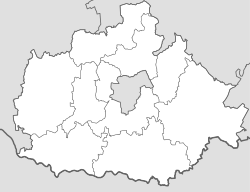Bogád | |
|---|---|
Village | |
 | |
| Coordinates: 46°05′N18°20′E / 46.083°N 18.333°E | |
| Country | |
| County | Baranya |
| Time zone | UTC+1 (CET) |
| • Summer (DST) | UTC+2 (CEST) |
Bogád | |
|---|---|
Village | |
 | |
| Coordinates: 46°05′N18°20′E / 46.083°N 18.333°E / 46.083; 18.333 | |
| Country | |
| County | Baranya |
| Time zone | UTC+1 (CET) |
| • Summer (DST) | UTC+2 (CEST) |
| | This Baranya County–related article is a stub. You can help Wikipedia by expanding it. |



